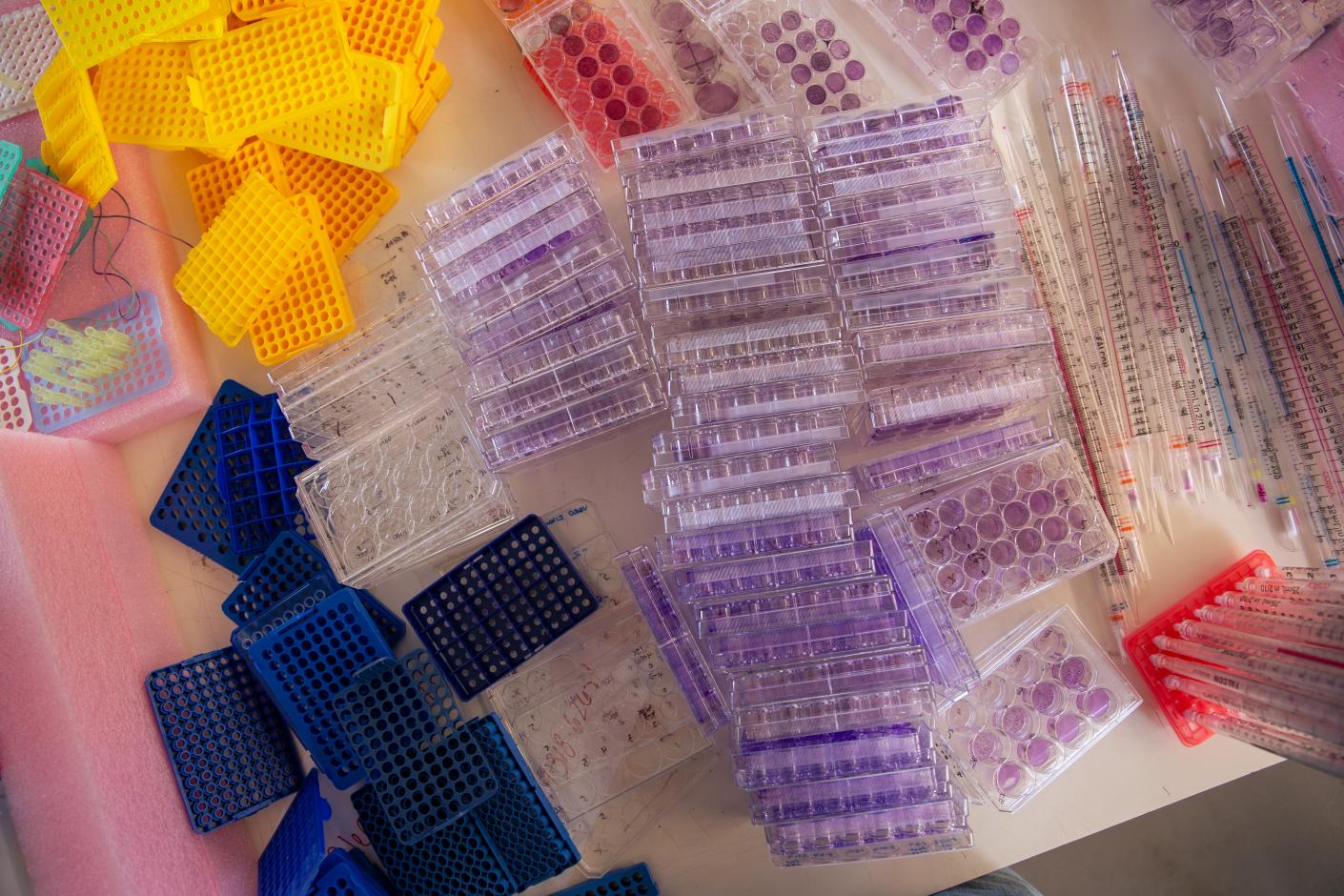Putting Art, Science, and Collaborative Partnerships to Work for People and Planet
A conversation with Desiree LaBeaud

Desiree LaBeaud, Stanford professor of pediatric infectious disease, is currently on leave as a Scholar in Service working at the Kenyan nonprofit Health and Environmental Research Institute (HERI). HERI connects scientists, community residents, and public officials and works to improve public health and environmental conditions in Kenya.
SIL's Kate Green Tripp recently spoke with Desiree about HERI's work to shore up both environmental and human health and harness creative power to fight the plastic pollution crisis.
We understand HERI is launching a hub of sorts during your service tenure. Can you say more about it?
We are launching the HERI Hub on May 1, 2023. This will be an educational hub designed to teach community members the foundations of environmental sustainability and inspire local solutions to environmental challenges. Seven interactive modules will be taught on topics including environmental health and circular waste economies, agribusiness, research methods, climate change impacts, and community engagement.
This hub will be the educational fulcrum for a stakeholder framework called the Diani Environmental Initiative. This collaborative framework will support a sustainability culture in Diani, a beautiful town on the South Indian Ocean coast of Kenya. The initiative brings together partners from the local, county, and national governments; local businesses and hospitality industries; health care providers, recyclers, community groups, and nonprofits like HERI.
How long have you been spending time in Kenya?
I study epidemiology and ecology of domestic and international arboviruses and emerging infections and started working in Kenya 20 years ago during my pediatric infectious disease fellowship. However, I’ve never spent more than three weeks at a time working on-site. As a Scholar in Service, I have the rare opportunity to spend more time on the ground partnering directly with community members.
What is the state of play around environmental pollution in Kenya right now? What’s working? What isn’t?
Just like everywhere in the world, waste is a big problem in Kenya. Here, plastic pollution is choking the beautiful Indian Ocean and endangering biodiversity and food security. Waste is also being burned, which contributes to local air pollution. On the land, waste can provide a breeding ground for mosquitoes that spread dangerous human health threats.
What is working well here in Kenya are intentional and functional partnerships among key stakeholder groups with aligned interests toward a common goal: a clean, green, healthy Diani! What hasn’t worked in the past are siloed efforts of many people interested in the environment, sustainability, and health. Working alone with only minimal success doesn’t allow for the level of impact necessary to foster real progress.
How does your work fit in?
HERI-Kenya’s tagline is “science with purpose.” We are using the insights gained from science conducted locally and translating it into actionable community change to promote health, well-being, and sustainability for the environment in the south coast of Kenya.
Some of our projects have included educational interventions that inform community members about the link between plastic trash and mosquito-borne diseases. We are also convening and supporting the formation and sustainability of collaborative networks of key partners to work together in creating a more sustainable and healthy Diani.
This summer, HERI will also support the launch of a pilot study to measure the impact of a Zero Waste Zero Burn neighborhood. We will promote circular economies of waste (compostable and plastics) at the community level to engage and employ youth and women while we transform waste into clean-burning fuel for cookstoves, fertilizers, protein feed for animal husbandry, and recycled plastic building supplies.
One recycling project that we are currently working on is the creation of an art sculpture from single-use plastics to increase awareness about the local (and global) plastic pollution crisis.
What is the role art plays in helping HERI and collaborators achieve broader impact?
We are using art as a medium to build awareness, engagement, and behavior change in the community about the plastic pollution crisis. Through Stanford’s Denning Visiting Artist Fund, we are working with artist Jean Shin at both Stanford and here in Diani to create two plastic art sculptures from single-use plastic waste. Through this “Plastic Planet” project, we also want to educate members of both communities on new ways of upcycling the waste that is around them every day.
In Kenya, building sculpture out of single-use plastic is also providing economic opportunities for people to create art with us. To date, we have employed more than 50 community members, including youth, women, and polytechnic students to work on transforming single-use plastic water bottles into a large ocean wave art sculpture that will rise to 10 feet tall and be located in the center of town. We hope that anyone who views the "Plastic Planet" wave will be inspired to change their own behavior with regard to single-use plastics.
